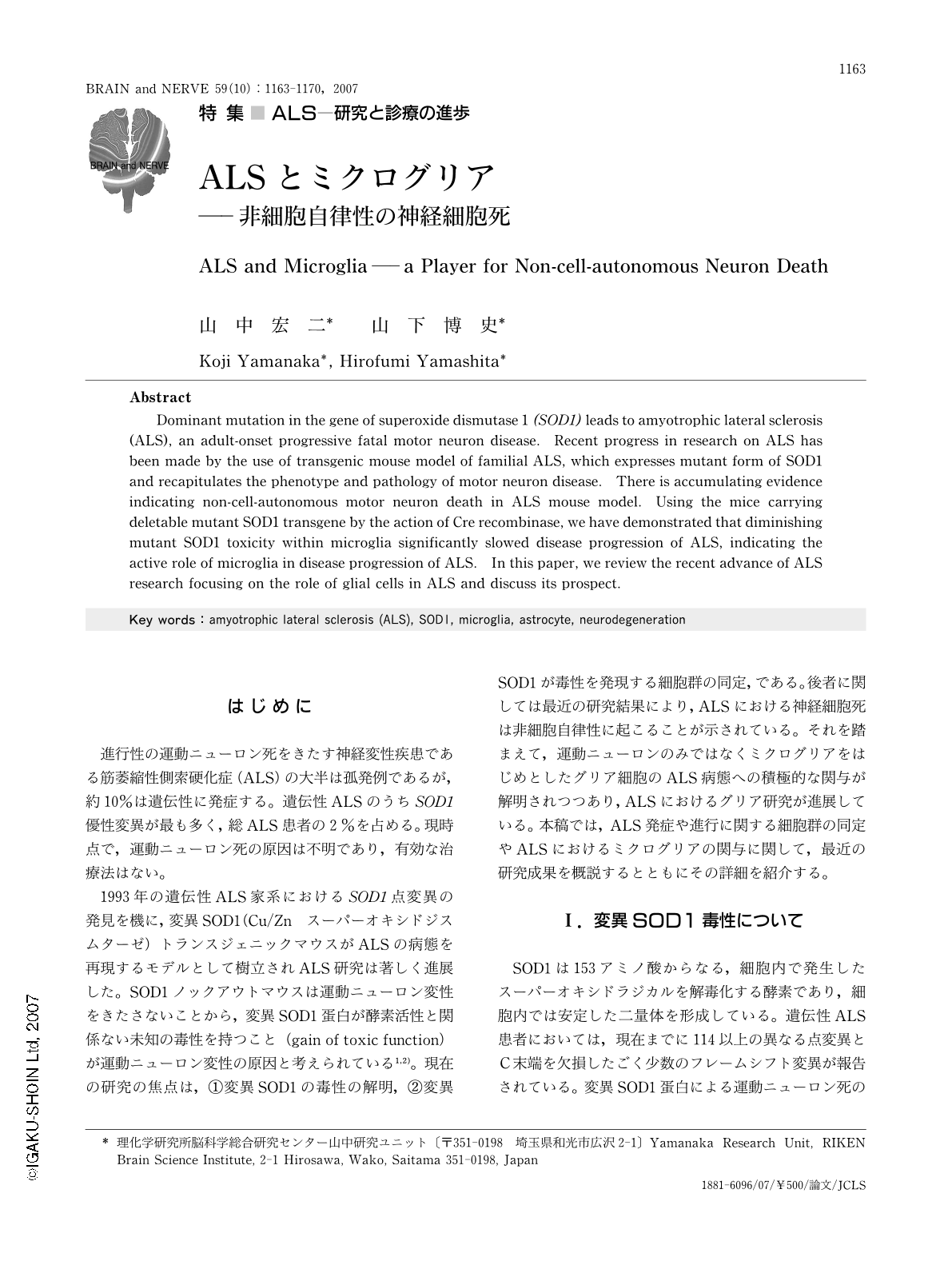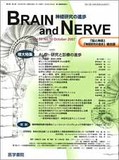Japanese
English
- 有料閲覧
- Abstract 文献概要
- 1ページ目 Look Inside
- 参考文献 Reference
はじめに
進行性の運動ニューロン死をきたす神経変性疾患である筋萎縮性側索硬化症(ALS)の大半は孤発例であるが,約10%は遺伝性に発症する。遺伝性ALSのうちSOD1優性変異が最も多く,総ALS患者の2%を占める。現時点で,運動ニューロン死の原因は不明であり,有効な治療法はない。
1993年の遺伝性ALS家系におけるSOD1点変異の発見を機に,変異SOD1(Cu/Zn スーパーオキシドジスムターゼ)トランスジェニックマウスがALSの病態を再現するモデルとして樹立されALS研究は著しく進展した。SOD1ノックアウトマウスは運動ニューロン変性をきたさないことから,変異SOD1蛋白が酵素活性と関係ない未知の毒性を持つこと(gain of toxic function)が運動ニューロン変性の原因と考えられている1,2)。現在の研究の焦点は,①変異SOD1の毒性の解明,②変異SOD1が毒性を発現する細胞群の同定,である。後者に関しては最近の研究結果により,ALSにおける神経細胞死は非細胞自律性に起こることが示されている。それを踏まえて,運動ニューロンのみではなくミクログリアをはじめとしたグリア細胞のALS病態への積極的な関与が解明されつつあり,ALSにおけるグリア研究が進展している。本稿では,ALS発症や進行に関する細胞群の同定やALSにおけるミクログリアの関与に関して,最近の研究成果を概説するとともにその詳細を紹介する。
Abstract
Dominant mutation in the gene of superoxide dismutase 1 (SOD1) leads to amyotrophic lateral sclerosis (ALS), an adult-onset progressive fatal motor neuron disease. Recent progress in research on ALS has been made by the use of transgenic mouse model of familial ALS, which expresses mutant form of SOD1 and recapitulates the phenotype and pathology of motor neuron disease. There is accumulating evidence indicating non-cell-autonomous motor neuron death in ALS mouse model. Using the mice carrying deletable mutant SOD1 transgene by the action of Cre recombinase, we have demonstrated that diminishing mutant SOD1 toxicity within microglia significantly slowed disease progression of ALS, indicating the active role of microglia in disease progression of ALS. In this paper, we review the recent advance of ALS research focusing on the role of glial cells in ALS and discuss its prospect.

Copyright © 2007, Igaku-Shoin Ltd. All rights reserved.


